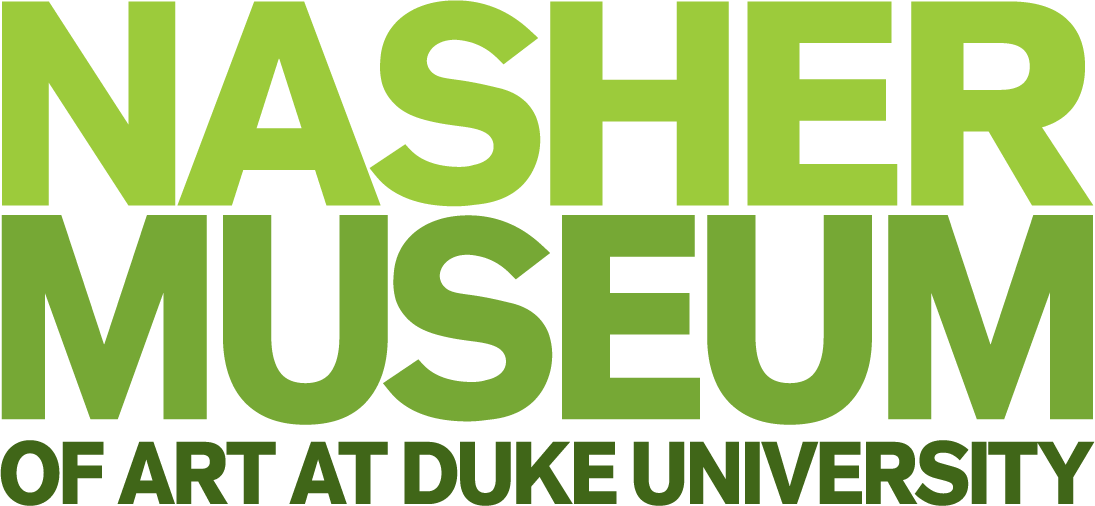Our collection strategy has always brought talented but underrecognized artists from the margins toward the center. If more museums practice this, the art historical canon will shift.
Trevor Schoonmaker, Deputy Director of Curatorial Affairs and Patsy R. and Raymond D. Nasher Curator of Contemporary Art

Over the past 12 years, the Nasher Museum has made a point to collect works of art by living artists who are connected with the exhibitions of contemporary art we organize. The collection has grown quickly—and with a consistent strategy that positions the Nasher Museum as unique among university art museums. Since opening in 2005, the museum has acquired work by diverse artists who are often underrepresented by the mainstream art world, with a special focus on female artists and artists of African descent.
In that spirit, the Nasher Museum acquired Precarity, a three-channel video that was a gift from the artist, Ghana-born, London-based filmmaker John Akomfrah. The collection is also expanding through other gifts. Last spring, the museum’s national Board of Advisors also approved the acquisition of 165 other works, including paintings, sculpture, photography, video, works on paper and more.
Berrio, Gaignard, Whetstone

In selecting the new acquisitions, director Sarah Schroth, the curators and board built on the success of Prospect.4: The Lotus in Spite of the Swamp, the citywide exhibition in New Orleans curated in 2017 by Schoonmaker. Ten works of art by Prospect.4 artists entered the Nasher Museum’s collection, including Akomfrah’s film Precarity, five photographs by Genevieve Gaignard, a mixed-media collage by Maria Berrio, and two photographs and a video by Jeff Whetstone.
Still Life with Catfish is part of a series Jeff Whetstone created for Prospect.4. In the series, he examines issues such as rising sea levels and trade on the Mississippi River. Whetstone’s enigmatic imagery shows some of the activities of those who depend on the river, such as a local immigrant fisherwoman, but face its imminent threat as a result of the global economy and a swiftly changing environment. Whetstone is professor and head of photography at Princeton University. His work has been reviewed in The New York Times, Los Angeles Times, New Yorker and Artnews, among other publications. The Whetstone works were a gift from Jennifer McCracken New and Jason New.
Andrews, Muholi, Waddell

Another highlight is 8, a monumental sculpture by Duke graduate Kathryn Andrews, who lives and works in Los Angeles. This work consists of eight chrome-plated steel tubes topped by birthday hats that lean, evenly spaced, against a wall. The sculpture 8 touches on the appeal of shiny, cheap objects found at children’s parties that may bring great joy but are often quickly destroyed or thrown away. Andrews frequently uses everyday objects to raise issues of materiality and appropriation, building on the work of such artists as Jeff Koons, Katharina Fritsch and John Baldessari. This gift came from the Bronzini-Traykovski Family.
Among the notable acquisitions of photography is a work by Zanele Muholi, Basizeni XI, Cassilhaus, North Carolina. Muholi’s photographic work often addresses issues related to the LGBTQIA community in Africa. In this photograph, Muholi turned the camera on herself to become the subject in a series in which she takes on different personas in each work. About the series, she has said, “By exaggerating the darkness of my skin tone, I’m reclaiming my blackness, which I feel is continuously performed by the privileged other.” The image shows Muholi wearing deflated bike tires found at the Scrap Exchange in Durham. She created the photograph while in residency at Cassilhaus, established by Frank Konhaus and Ellen Cassilly in Chapel Hill.
Another standout is a 2017 work on paper by Durham-based artist Stacy Lynn Waddell, Self-Portrait (Silver and Burned). This work incorporates aluminum leaf and Waddell’s refined technique of burning paper to create a richly tex- tured surface capturing the artist’s own likeness, drawn to form detailed contour and modeling. Waddell looks directly out at the viewer, confidently establishing her own place within the history of self-portraiture and her role as an artist using both traditional and nontraditional methods. Waddell earned an MFA at UNC-Chapel Hill in 2007 and has held many residencies, most recently at QueenSpace, New York (2018) and the Joan Mitchell Center, New Orleans (2017). Dr. Susan B. Rosenthal and Michael Hershfield made this acquisition possible.
Young

Nettie Young belonged to a group of quilters from Gee’s Bend, an isolated area of southwest Alabama inhabited by descendants of slaves, where quilt-making traditions were passed down from generation to generation. Young made her first quilt at the age of 11. The quilters’ original patterning, usually made with scraps from old clothes and other used fabrics, incorporated unique, minimalist designs that eventually drew the attention of the larger public.
Untitled (Housetop), begun in 1970 and completed in 2003, provides a prime example of the bold colors, geometric design, and inventiveness now nationally recognized in Gee’s Bend quilts. The term “housetop” refers to the quilt’s design dominated by concentric squares, and is the area’s most popular “pattern.” Beginning with a central anchor piece, rectangular strips are then added, forming frames that eventually work their way outward. This format has also been compared to the traditional “call and response” of African American music and worship, with its dynamic push and pull of formal elements. Made of corduroy and other repurposed fabrics, Young’s quilt offers an intricate example of detailed housetop handiwork, as well as the long-standing African American traditions of Gee’s Bend, Alabama.
